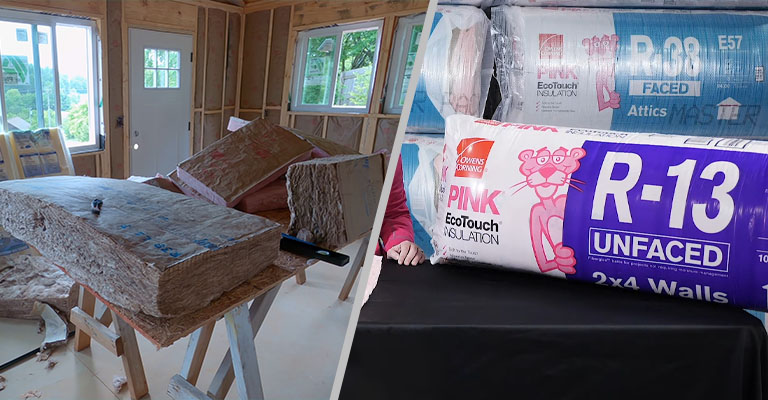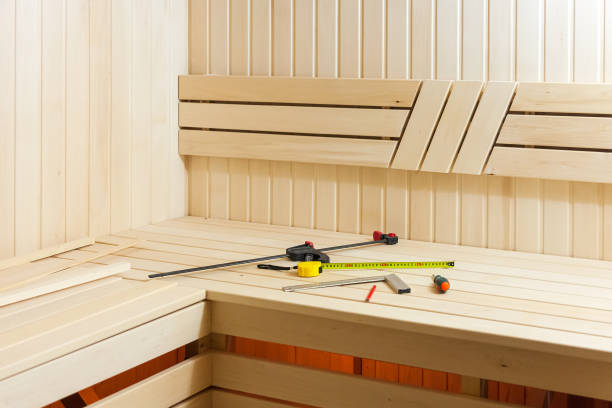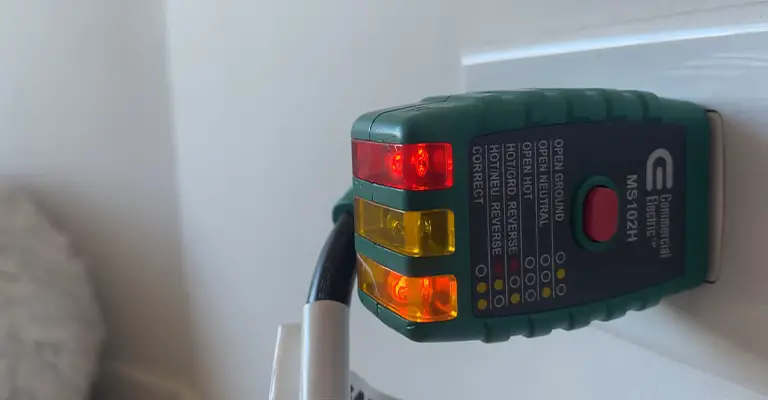How Do I Know If My Garage Door Sensor Is Bad?
A garage door sensor is a small device that can be installed on the ceiling of your garage; when activated, it sends an alert to your smart device, allowing you to open the door remotely.
If the sensor is broken, it will not send any alerts and will not work properly. If you are wondering if your garage door sensor is bad, there are a few ways to determine this.
What Are the Symptoms of a Bad Garage Door?
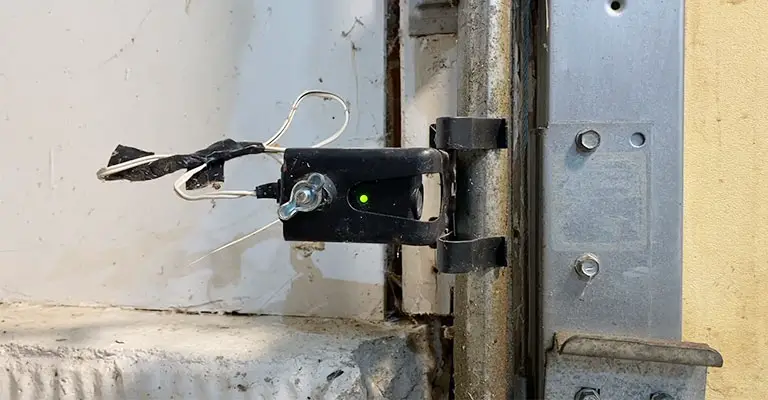
A garage door is a complex system of springs, cables, rollers, tracks, hinges, sensors and a motor that work together to lift and lower the door smoothly and safely.
However, over time, some of these components can wear out, break down or malfunction, causing problems with your garage door operation.
In this blog post, we will discuss some of the common symptoms of a bad garage door and what you can do to fix them.
Symptom #1: The door won’t open or close
One of the most obvious signs that something is wrong with your garage door is when it won’t open or close at all. This could be due to several reasons, such as:
- A broken spring: The spring is the part that counterbalances the weight of the door and makes it easy to lift and lower. If the spring breaks, the door will feel very heavy and may not move at all.
You can tell if you have a broken spring by looking at the shaft above the door. If there is a gap in the spring or if it hangs down, it needs to be replaced by a professional. - A faulty sensor
The sensor is the part that detects if there is anything blocking the path of the door and prevents it from closing on it. If the sensor is broken, misaligned or obstructed by dirt or debris, it may not sense the door properly and prevent it from opening or closing.
You can tell if you have a faulty sensor by checking if the sensor lights are on, blinking or off. If they are off or blinking, try cleaning them or adjusting their position. If they are on but the door still won’t close, you may need to replace them. - A stripped gear: The gear is the part that connects the motor to the chain or belt that moves the door. If the gear wears out or gets damaged by excessive force or friction, it may not turn properly and cause the motor to run but not move the door.
You can tell if you have a stripped gear by listening to the sound of the motor. If it makes a loud grinding noise, you may need to replace the gear.
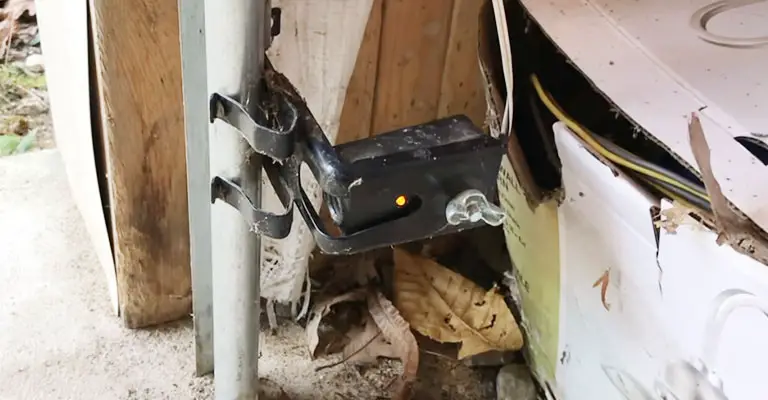
Symptom #2: The door makes a lot of noise
Another sign that something is wrong with your garage door is when it makes a lot of noise as it opens or closes. This could be due to several reasons, such as:
- Worn out rollers: The rollers are the parts that run along the tracks and guide the door up and down. If they get worn out, rusty or dirty, they may not roll smoothly and create friction and noise. You can tell if you have worn out rollers by looking at them and feeling them. If they are cracked, chipped or rough, they need to be replaced.
- Loose hardware: The hardware includes all the screws, bolts and brackets that hold the tracks, hinges and other parts together. If they get loose over time, they may cause vibrations and noise as the door moves. You can tell if you have loose hardware by inspecting them and tightening them if needed.
- Failed sprocket bearing: The sprocket bearing is the part that supports the sprocket, which is attached to the chain or belt that moves the door. If it fails, it may cause loud squeaking or clanking sounds as the chain or belt rubs against it. You can tell if you have a failed sprocket bearing by looking at it and seeing if it is worn out or broken.
Symptom #3: The door is uneven or off-track
Another sign that something is wrong with your garage door is when it is uneven or off-track. This means that one side of the door is higher or lower than the other, or that it has come out of its tracks completely. This could be due to several reasons, such as:
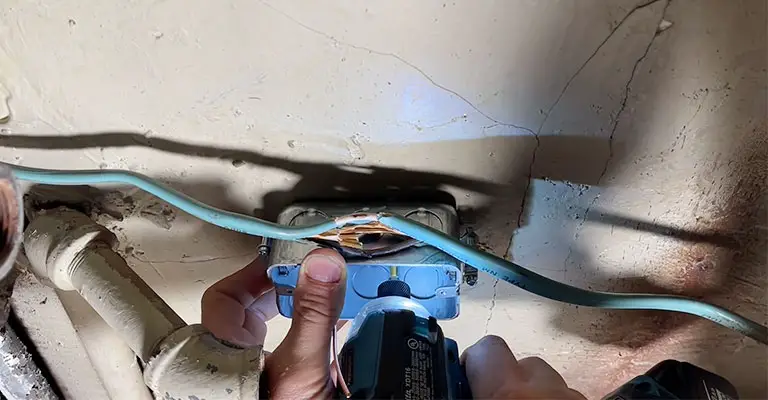
- A broken cable: The cable is the part that connects the spring to the bottom corner of the door and helps lift and lower it evenly.
If it breaks, one side of the door may drop down or hang up. You can tell if you have a broken cable by looking at it and seeing if it is frayed or snapped. - A stripped trolley: The trolley is the part that connects the opener to the door and moves it along its tracks. If it gets stripped by excessive force or wear and tear, it may not grip.
The chain or belt properly and cause the door to slip off its tracks. You can tell if you have a stripped trolley by looking.
Light Indicators
A blinking LED light outside the garage door can indicate that your garage door sensors are out of alignment. A green light indicates that the sensors are working, while a red light indicates that the sensors are not aligned.
Red lights may indicate that the bracket needs to be inspected or the blinking sensor needs to be tightened. To know if the sensor has been fixed, watch the light stop blinking and see if the garage door is now closing properly.
Garage Door Sensors: How Do They Work?
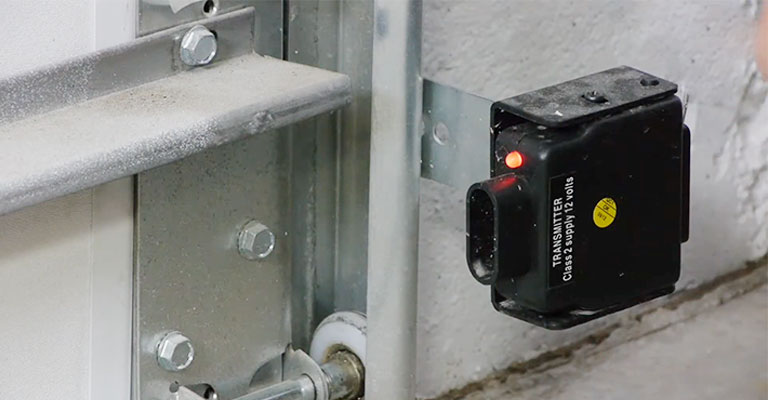
Have you noticed that your garage door sensor isn’t working? Before you try to fix a garage door problem yourself, it is important first to understand how garage doors work.
Residential garage doors with automatic openers have required safety sensors since 1993 so that they do not close on people or objects. There must be sensors on every garage door that can detect obstructions before closing. For automatic garage doors, sensors are a crucial safety feature.
In the event of an object in the path of the closing door, sensors can reverse the direction of the door closing. As a result, when the door is reopened, it will be in the open position. This creates a serious safety hazard and a serious inconvenience if the sensors fail to work.
What Is The Best Way To Test Garage Door Sensors?
The best way to test garage door sensors is to familiarize yourself with how they work. It is fairly straightforward to determine whether your garage door sensor is bad.
The solution is often simple enough to complete by yourself once you determine that the sensors are malfunctioning. For example, a cardboard box is a common everyday object you can use to test your garage door sensor.
The box should be placed in the line of the sensors, and the garage door should be closed once the box is in place. Your door is functioning correctly if it reverses when it detects an obstruction. It is important to troubleshoot and look for signs that the sensors malfunction if the door closes on the box.
Self-Diagnosing The Garage Door Sensor
When one has a bad garage door sensor, it is crucial to know how to diagnose the problem. Sensors can malfunction for a variety of reasons. A step-by-step guide to the assessment process is provided below.
Check For Moisture
It is possible that sensors may not work if they have been exposed to rainwater, sprinklers, or pressure washers. Therefore, when testing whether they are working properly, it is recommended that you wait until they are completely dry.
Keep An Eye Out For Nearby Objects
If the box is placed in front of the sensor, test the door to see if it will still crush it. If the garage door closes down, check the area around it for any objects that may be present.
The doorway should be clear of plants, gardening tools, and animals. You can tell if the sensors are functioning properly by closing the door and seeing if it remains open.
Make Sure The Sensors’ LEDs Are Working
LED lights are mounted at the outer sides of each garage door sensor. Check each LED on each sensor after turning on the electric power supply. Whenever an LED blinks, it means the LED needs to be aligned to function properly.
Just tighten the screws holding the sensors in place to adjust them. Blinking may still occur if the bracket is bent. Tilt it back to its correct position if the blinking persists. Blinking LEDs should be reported to a technician.
Measure The Height Of The Door Sensors
To determine how high an object needs to be to block the garage door sensors, measure the height of the sensors. When a sensor detects an object near the door, it blocks the door from opening or closing.
Get Boxes
Make sure you have some cardboard boxes on hand. It is important to ensure that the height of the boxes is higher than the height of the door sensors. Then, just in front of the sensors, arrange the boxes in the garage doorway.
Make Sure The Sensors Are Working
The door should be open, and the opener should be activated. Alternatively, you can use the remote control or the close button on the garage wall. Closed garage doors indicate faulty sensors.
It is best to involve a technician, in this case, to ensure that the opener is aligned properly. A door that goes back to its open position indicates that the sensors are working properly.
Several of these troubleshooting options might work, but if none of them do, you might find some help in the garage door sensor’s manual.
As a last resort, you can contact an expert to fix the garage door problem for you. Occasionally, worn garage door sensors cannot be repaired, and it is best to replace them with new ones in such cases.
Final Words
If your sensors are working fine, but you’re still having issues opening or closing your garage door, there could be a problem with the opener itself. In this case, it’s best to contact a professional for help.



